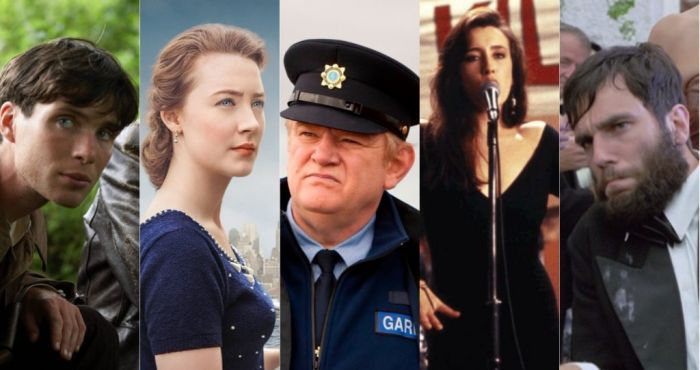WHAT IS A TYPICAL IRISH FILM?
“In the world we need to talk to each other, listen & understand how we see things differently. Cinema is one of the best ways to do this.” – Martin Scorsese

What is the most famous film from your country? Do you like it?
There are many famous Irish films. Have you ever seen any Irish films or films about Ireland? Was it very different from a typical film from your country?
NATIONAL CINEMA
Read the short descriptions of the national cinema in different countries. Do you agree with the descriptions if you are familiar what each country’s cinema culture? Which cinema would you like to find out more about?

1. Martial arts, adult animation, monster films and horror. – Japan
2. Naturalistic films about normal people, also dealing with social limitations, especially of women. – Iran
3. It includes lots of songs and dancing in unexpected places, melodrama and humour. – India
4. Artistic, romantic, philosophical films, often reflecting a director’s personal creative vision. – France
5. Big blockbuster films with lots of action and visually impressive special effects.– USA
How would you describe the national cinema of your country?
IRISH NATIONAL CINEMA
From the Irish films you’ve seen, or from your general knowledge of Irish culture, what would you expect a ‘typical’ Irish film to look like? What would the typical subject matter or focus be? What can you say about the language, dress and behaviour of the characters etc?
What is ‘Irish cinema’?
Before the 1980s, the Irish film industry was very small. The most well-known ‘Irish’ films were romanticised Hollywood versions of Ireland such as The Quiet Man (1952), Darby O’Gill (1959) and Ryan’s Daughter (1970).
In the 1980s and 90s, Irish films tended to deal with themes around rural or Catholic Ireland, for example The Field (1990) and Angela’s Ashes (1999)…
…with the poor, working class, eg. My Left Foot (1989) and The Snapper (1993)…
…or with the political situation in Northern Ireland and Ireland’s long history with England, eg. Michael Collins (1996) and The Boxer (1997).
Around the turn of the millennium, Irish cinema experienced a shift from the rural to urban, from historical to contemporary and from local to universal. New genre-based films appeared that represented Ireland as more modern and metropolitan with romantic comedies such as About Adam (2000), When Brendan Met Trudy (2001).
There were also modern crime or gangster movies such as The General (1999) and In Bruges (2008).
In many modern Irish films, there is a preoccupation with the underclass and people on the edges of society, unsuccessful people, losers or rebels, eg. The Commitments (1991), I Went Down (1997) and Sing Street (2016).
Irish films also deal with the sometimes negative legacies of Ireland’s past, such as the sexual scandals in the Catholic church, The Magdalene Sisters (2002) and Philomena (2013).
Celtic legend and the mythology of Ireland’s past are either portrayed directly (usually in animation) or through a sense of mysticism and romanticism in the modern world, eg. In America (2002), Ondine (2009) and The Secret of Kells (2010).
Irish films continue to be characterised by local Irish humour and speech. It has been said that there is a dominance of a ‘literary’ rather than ‘visual’ tradition in Irish film. Many Irish filmmakers, such as Neil Jordan and Jim Sheridan, Ireland’s first two internationally famous directors in the 1990s, are prominent both as writers and directors of their films.
Do you think watching films is a good way to improve your English? And also to learn about the culture of a country?

